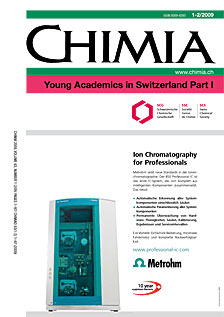Physico-Chemical Differences Between Particle- and Molecule-Derived Toxicity: Can We Make Inherently Safe Nanoparticles?
DOI:
https://doi.org/10.2533/chimia.2009.38Keywords:
Ecotoxicology, Engineered nanoparticles, Nanotoxicology, Persistence, RiskAbstract
The rapidly growing applications of nanotechnology require a detailed understanding of benefits and risks, particularly in toxicology. The present study reviews the physical and chemical differences between particles and molecules when interacting with living organisms. In contrast to classical chemicals, the mobility of nanoparticles is governed by agglomeration, a clustering process that changes the characteristic size of the nanomaterials during exposure, toxicity tests or in the environment. The current status of nanotoxicology highlights non-classical toxic interactions through catalytic processes inside living cells and the enhanced heavy metal transport into the cytosol through the 'Trojan horse mechanism'. The safety of nanoparticles in consumer goods is proposed to be rendered inherently safer by substituting the currently used persistent oxides through biodegradable materials.Downloads
Published
2009-02-25
Issue
Section
Scientific Articles
License
Copyright (c) 2009 Swiss Chemical Society

This work is licensed under a Creative Commons Attribution-NonCommercial 4.0 International License.
How to Cite
[1]
Chimia 2009, 63, 38, DOI: 10.2533/chimia.2009.38.







